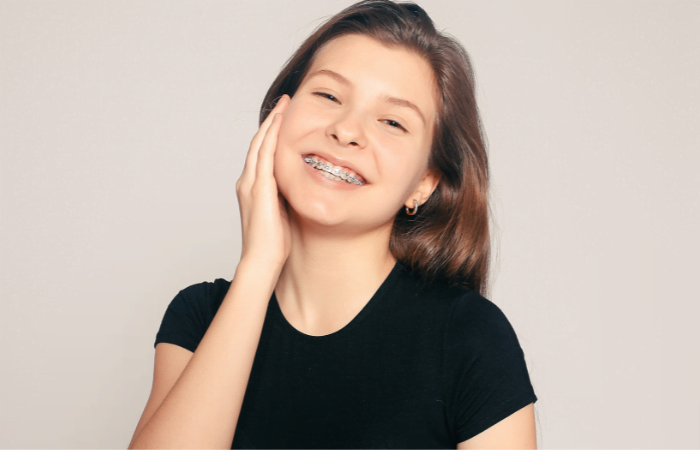
A beautiful smile is not just about aesthetics; it plays a crucial role in oral health. Misaligned teeth, overbites, and other orthodontic issues can lead to dental problems like cavities, gum disease, and jaw pain. Dental braces offer a proven solution to fix these concerns, ensuring both a functional and attractive smile. If you're looking for the best braces for teeth or wondering how overbite correction works, this guide has everything you need to know.
Dental braces are orthodontic devices used to straighten misaligned teeth, correct bite issues, and improve overall dental function. They apply continuous pressure over time, gradually shifting teeth into their proper positions.
a] Metal Braces: Traditional braces made of stainless steel; highly effective and budget-friendly.
b] Ceramic Braces: Less noticeable than metal braces, blending with natural teeth color.
c]
Lingual Braces: Placed behind the teeth, offering an invisible orthodontic treatment.
d] Clear Aligners (Invisalign): Transparent, removable trays that gradually shift teeth.
Choosing the best braces for teeth depends on your orthodontic needs, budget, and personal preferences.
a] Crooked or Misaligned Teeth - Misaligned teeth not only affect appearance but also make brushing and flossing difficult, leading to plaque buildup and cavities. Dental braces align teeth properly, improving both function and hygiene.
b] Overbite Correction - An overbite occurs when the upper teeth excessively overlap the lower teeth, potentially causing: Jaw pain Difficulty chewing Increased risk of enamel wear. Overbite correction with braces gradually shifts teeth into a balanced alignment, preventing further complications.
c] Underbite and Crossbite Issues - An underbite happens when lower teeth extend beyond the upper teeth, while a crossbite occurs when some upper teeth sit inside the lower ones. Both conditions can cause difficulty in speaking and chewing, which dental braces effectively address.
d] Gaps Between Teeth (Diastema)- Braces can close gaps between teeth, enhancing both aesthetics and functionality.
e] Crowded Teeth - Crowding occurs when there isn't enough space for teeth to align properly. Braces help create space and straighten crowded teeth, improving bite efficiency.
a] Consultation with an Orthodontist: A specialist examines your teeth and recommends the best treatment.
b] Customized Treatment Plan: Based on X-rays and impressions, a detailed plan is created.
c] Braces Placement: The braces or aligners are fitted according to the treatment plan.
d]
Regular Adjustments: Patients visit the orthodontist for periodic tightening or new aligners.
e] Retention Phase: After removing the braces, retainers are used to maintain results.
The duration of dental braces treatment varies depending on the severity of the issue. On average, it takes between 12-36 months to achieve the desired results.
Looking for the best braces for teeth or overbite correction? At Diagnopein, we provide expert orthodontic solutions tailored to your needs. Our specialists ensure a comfortable and effective treatment process.